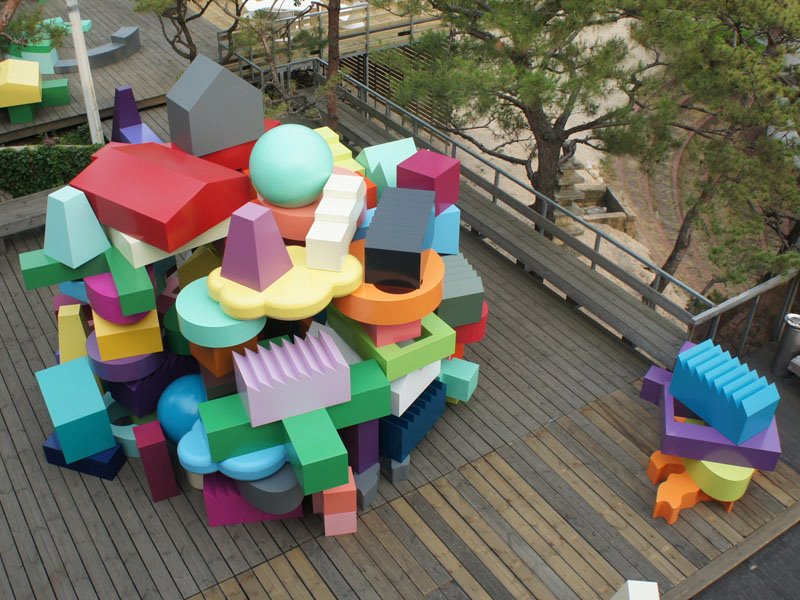Under the title Welcome to the Vertical Village the exhibition explores the rapid urban transformation in East Asia, the qualities of urban villages and the potential to realize this in a much denser, vertical way as a radical alternative to the monotonous block architecture with identical standard apartments and its consequences for the city. The exhibition consists of analytical research, various movies, a documentary and animations, two software packages and a 3 meter tall sculpture of a possible Vertical Village developed by MVRDV and The Why Factory. Visitors can design their ideal house and compose their own Vertical Village with parametric software.Total Museum of Contemporary Art (TMCA) in Seoul had invited MVRDV, The Why Factory and JUT Foundation for Arts and Architecture to move the Vertical Village exhibition to Seoul. The exhibition is developed as a large installation. Visitors experience a walk through a large 1:15 scale model of a vertical village composed of more than 700 objects, turning the museum into a Vertical Village itself.Outside a model of the Vertical Village is exhibited, which after the show will be shown permanently as a piece or public art at a small plaza in the city centre which is surrounded by grey monolithic buildings, emphasizing the quality of the urban village even more.
The pressure on the East Asian cities has lead to an increasing urbanization and densification during the last decades. It has made way for the construction of giant buildings, mostly towers, blocks and slabs. A Block Attack that gradually replaces and scrapes away the more traditional low rise, small scale, often lighter types of architecture and urbanism: the Hutong in Beijing, the small wooden houses in Tokyo, the villages in Singapore, the individual houses in Taipei, and in Seoul and other East Asian cities. These urban villages form mostly intense and socially highly connected communities, with enormous individual identities and differentiations. One can speak of urban ecologies, communities that have evolved over the course of centuries. Their rapid, faceless replacements by large scale monolithic blocks, packed with identical apartment units offer a Western standard of living at an affordable price, but at the expense of differentiation, flexibility and individual expression.Is there an alternative to this process? Can one imagine a new model for the development of East Asian cities? Can these areas be densified in such a way that the qualities of the traditional village are preserved? The Vertical Village is proposed as an contemporary alternative a three-dimensional community that brings personal freedom, diversity, flexibility and neighbourhood life back into East Asian and maybe even Western cities.
Equal Books Publishers Seoul publish the Korean edition of the Vertical Village catalogue, with added and updated to the English and Chinese edition. The book contains the ample research made comprehensible with countless colour illustrations. It features detailed case studies for Seoul, Beijing, Shanghai, Taipei, Djakarta, Tokyo and Bangkok, interviews with Winy Maas, Alfredo Brillemburg and Hubert Klumpner, Lieven De Cauter, Peter Trummer and many others.The exhibition and publication has been made possible with the generous support of ILJIN, JUT Foundation for Arts and Architecture Taipei, Delft University of Technology, The Why Foundation and the Netherlands Architecture Funds.Total Museum of Contemporary Art (TMCA) is Koreas first private museum devoted to the art of our time. The TMCA offers various programs of the most thought provoking art in the form of exhibitions, workshops, performances, and lectures. Since its inception, the museum has focused on introducing international contemporary art scenes to Korea and vice versa by inviting many renowned artists like Bernar Venet, Tal Streeter, Bjorn Melhus, Dryden Goodwin, and James Turrell. Located near Mt. Bukhan, the TMCA provides unique experience of interaction between art, nature, and museum architecture.
